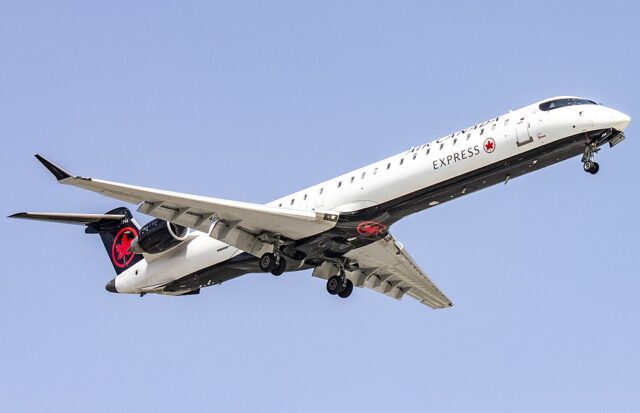First Chinese mystery tiltrotor spotted, resembling Leonardo AW609 design

August 19, 2025

China may be set to join a select group of countries building tiltrotor aircraft. Tiltrotors combine the advantages of the vertical take-off and landing of a helicopter with the speed and efficiency of a turboprop aircraft.
First known Chinese tiltrotor emerges online
The War Zone (TWZ) reported on a new type of Chinese tiltrotor aircraft after photos appeared online, which is “the first of its kind to take to the air in that country, at least that we know about”.
The aircraft appears to already be ungoing flight testing, but the programme remains shrouded in mystery.

The TWZ also reported there are unconfirmed rumours that Hafei Aviation Industry is building the aircraft. Hafei is a subsidiary of Harbin and is based in Harbin City, although it also has branches in Beijing.
Hafei produces light aeroplanes and helicopters. Previously, similar-looking tiltrotors have been presented by China’s state-owned AVIC aerospace conglomerate.
In one image, the tiltrotor can be seen in a hangar, with another prototype parked right behind it. The design features a cabin slung under a straight wing and has turboshaft engines in nacelles mounted at the wingtips. As a tiltrotor, each rotatable pod has a proprotor that tilts for different stages of flight.
The aircraft appears to resemble the Leonardo AW609 tiltrotor that is now undergoing flight testing in the United States. News of the Chinese tiltrotor comes weeks after the first photos of a new Chinese ground effect vehicle, or ekranoplan, surfaced.
World’s growing suite of tiltrotors
The most famous tiltrotor is the much larger US military V-22 Osprey, which is primarily used by the US Marine Corps but is also in service with the US Navy, US Air Force, and the Japanese Ground Self-Defence Force in smaller numbers. For now, the V-22 is the only in-service tiltrotor aircraft.

Meanwhile, the US Army is working to replace many of its ubiquitous UH-60 Blackhawks with the upcoming Bell V-280 Valor tiltrotor (now called the Bell MV-75). The Valor is expected to enter service in the early 2030s.
The Leonardo AW609 first flew in 2003 and was originally called the Bell-Augusta BA609. Unlike its military counterparts, it is aimed at the civil aviation market, including VIP customers and offshore oil and gas operators. It is currently undergoing final certification testing.
In 2022, NASA released a paper entitled “Conceptual Design of Tiltrotor Aircraft for Urban Air Mobility,” highlighting the potential use of tiltrotors as urban taxis and cargo transports.
While not tiltrotors like those mentioned above, eVTOL aircraft like Joby S4 and Archer Mightnight feature tilting propellers.
Military applications of tiltrotor aircraft
The V-22 Osprey was the first tiltrotor to enter service in 2007, but the concept is nothing new. The US has been experimenting with the concept and designing them since the Transcendental Model 1-G experimental tiltrotor that flew in 1954.

The V-22 Osprey gained traction after the Iran hostage crisis of 1979 to 1981. The US military realised it needed a transport aircraft that could take off and land vertically in a stadium (helicopters were insufficient). The US even bolted rocket pods onto a C-130 Hercules to enable it to take off from the stadium, although the plan was shelved before being executed.
It is unclear if this new Chinese tiltrotor is intended for the military, but it would have clear military applications with the People’s Liberation Army (PLA) as it seeks to establish control over the South China Sea.
Designed for soldiers, built for the future. The Future Long-Range Assault Aircraft will redefine the Army’s ability to go farther, faster, and smarter.
— Bell (@BellFlight) August 18, 2025
Watch the full @CBSnews documentary to see how Bell and the @USArmy are shaping the future of vertical assault. #FLRAA… pic.twitter.com/d2C3UNWovK
The US Army’s V-280/MV-75 tiltrotor will be able to transform the way units like the 101st Airborne Division operate. Compared with Blackhawks, the tiltrotor aeroplane/helicopter hybrid will offer a combat range of 580-920 miles (vs 370 miles), a ferry range of 2,400 miles (vs 1,389 miles), and a cruise speed of 320 mph (vs. 175 mph).
















